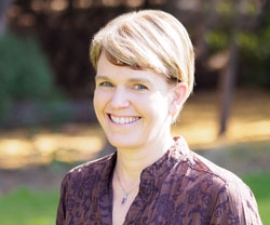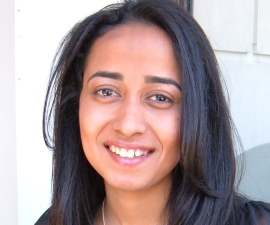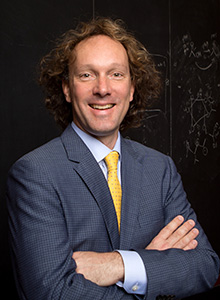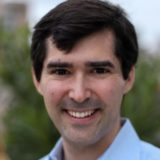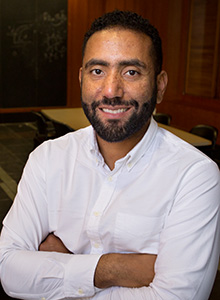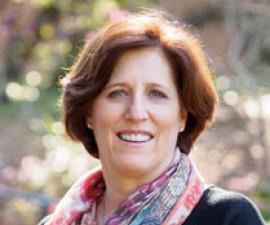About
Biology is being revolutionized by new experimental techniques that have made it possible to quantitatively query the inner workings of molecules, cells and multicellular organisms in ways that were previously unimaginable. The objective of this course is to respond to this deluge of quantitative data through quantitative models and the use of biological numeracy. The course will explore the description of a broad array of topics from modern biology using the language of physics, mathematics and statistics. One style of thinking we will emphasize is to perform simple calculations that one can do with a stick in the sand.
We will draw examples from broad swaths of modern biology from our department and beyond, including cell biology (cell growth, signaling and regulation), physiology (metabolism), developmental biology (patterning of body plans, how size and number of organelles and tissues are controlled), neuroscience (action potentials and ion channel gating) and evolution (population genetics) in order to develop theoretical models that make precise predictions about biological phenomena. These predictions will be tested through the hands-on analysis of experimental data and by performing numerical simulations using Python. Quantitative and physical biology will be introduced as an exciting new tool to complement other approaches within biology such as genetics, genomics and structural biology. The course will introduce students to the enabling power of biological numeracy in scientific discovery and make it possible for them to use these tools in their own future research.
Logistics
- The Bootcamp will include first year students from MCB, Biophysics and Computational Biology, as well as a few outside visiting students. In total, we will have around 60 people! No previous math, physics or coding experience will be assumed. This means that we will go through everything carefully and hope that those that are experts at one or other topic will suspend disbelief, have fun, and help their neighbors and friends. Even for the experts, we guarantee that there will be plenty of new topics/ examples we’ll cover that you won’t be bored. The syllabus for the course can be found here.
- From 8/18 to 9/1 the Bootcamp will run from 9am to 3:30pm, with study halls and experimental rotations starting at 3:30pm onwards.
- All sessions will be in the first floor conference room of the IGI building. The building is locked to outsiders, but we’ll work on getting you card key access as soon as you get an ID card! If you need to get in and nobody is there you can message us on Slack or call/message us.
- We will code in Python using the web-based Google CoLab. This means that you don’t need fancy computers. In fact, you can use your iPad/ laptop. Just be mindful of coming with as much battery as possible, as there might not be enough ports for everybody to charge their devices at the same time.
- To learn more about Python and start ahead of the course, you can explore the content and tutorials available on CodeAcademy, Coursera, and W3schools.
- We are excited to offer experimental rotations this year for those who are interested in learning more about research in different fields. Students are asked to fill out the following survey to indicate their top five lab/rotation preference by Saturday 19 August. The survey can be found here.
People
Instructors:
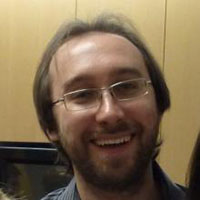
Hernan Garcia
(MCB/ Physics)
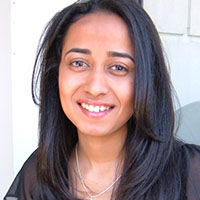
Priya Moorjani
(MCB/ Computational Biology)
Graduate Student Instructors:
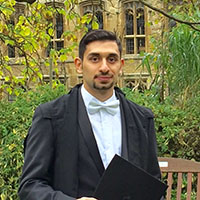
Arman Karshenas
(Biophysics)
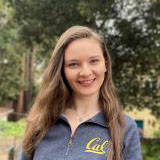
Yasemin Kiriscioglu
(Physics)
Course Structure
Tentative plan for each day:
9.00-12.00 Hands-on lecture and discussion with coffee break
12.00-12:30 Lunch
12.30-14.00 Research talk and informal session with speaker
14.00-16.00 Hands-on lecture and discussion with coffee break
16.00-16.30 Study hall and time to work on estimates
17.00 Optional experimental rotation
Speakers
| Number | Date | Speaker | Title |
|---|---|---|---|
| 1 | 8/18 |
Rebecca Heald
|
Biological size control and scaling |
| 2 | 8/21 |
Priya Moorjani
|
Genomic Insights into Human History & Evolution |
| 3 | 8/22 |
Dan Fletcher
|
|
| 4 | 8/23 |
Peter Sudmant
|
Genome assembly / pangenomes / structural variation |
| 5 | 8/24 |
Max Staller
|
Transcription, evolution, theory, molecular mechanism |
| 6 | 8/25 |
Oskar Hallatschek
|
Scale-dependence in ecology and evolution |
| 7 | 8/28 |
Aaron Streets
|
|
| 8 | 8/29 |
Carlos Bustamante
|
|
| 9 | 8/30 |
Ahmet Yildiz
|
Single molecule fluorescence imaging and applications to molecular motors |
| 10 | 8/31 |
Susan Marqusee
|
Experimental Rotations
| Number | Lab (instructor) | # days and dates available | Project(s) description |
|---|---|---|---|
| 1 | Fletcher (Liya Oster) |
Monday-Thursday (one group Mon-Tue, one group Wed-Thu), Aug 21-24 |
Building a microscope: In the Fletcher Lab rotation, students will gain hands-on experience with the basic principles behind practical light microscopy and fluorescence microscopy to build a simple functioning microscope from component parts. |
| 2 | Yildiz (Joseph Slivka) |
Monday-Wednesday (one group each day), Aug 21-23 Monday-Thursday (one group each day), Aug 28-31 2 students per group |
Single molecular motor stepping: We will train students in the single molecule technique TIRF microscopy to study in vitro reconstitution of intracellular transport in real time and with super resolution. We will explain TIRF microscopy and how it is used to study biological questions, then utilize it to observe how motors move by observing their stepping pattern or by the presence of different cargo adaptors. |
| 3 | Yildiz (Joy Zhong) |
Monday-Friday (one group each day), Aug 21-25 Monday-Wednesday (one group each day), Aug 28-31 2 students per group |
Microtubule Motility assay: We will train students in the single molecule technique TIRF microscopy to study in vitro reconstitution of intracellular transport in real time and with super resolution. We will explain TIRF microscopy and how it is used to study biological questions, then utilize it to observe how motors move by observing their stepping pattern or by the presence of different cargo adaptors. |
| 4 | Bustamante (Francesca Bravo) |
Monday Aug 21: 4:30-6:00pm (group 1), and 6:00-7:30pm (group 2) 4 students per group |
Pulling DNA with optical tweezers: We will use high-resolution optical tweezers to study at the single-molecule level the response of DNA to mechanical forces and to characterize protein-DNA interactions. |
| 5 | Bustamante (Robert Sosa) | Tuesday Aug 22: 4:30-5:30pm (group 1), 5:30-6:30pm (group 2), and 6:30-7:30pm (group 3) | Protein folding with optical tweezers: We will use high-resolution optical tweezers to follow individual trajectories of protein (un)folding in real-time. |
| 6 | Hallatschek |
Monday-Wednesday (one group each day), Aug 28-30 4 students per group |
Evolution! |
| 7 | Garcia (Andrea Herman & Yovan Badal) |
Monday-Thursday (two groups each day apart from Thursday), Aug 21-24 Monday-Thursday (one group each day), Aug 28-31 3 students per group |
Measuring transcription cycle in fly embryos: Students will measure the live initiation and elongation rate of RNA transcripts for a Drosophila early embryo morphogen protein on a confocal microscope using a fluorescent reporter construct. |
| 8 | Garcia (Brandon Schlomann) |
Tuesday, Friday, Thursday (one group each day), Aug 22,25, and 31 3 students per group |
Single-cell immune response in living fly larvae: We will use light sheet fluorescence microscopy to peer directly into the immune systems of live fly larvae and measure patterns of single-cell gene expression during bacterial infection. We will explore how mathematical models can be used to connect static measurements of gene expression distributions to the underlying single-cell dynamics, providing evidence for or against mechanisms such as transcriptional bursting and the formation of spatial microenvironments. |
Syllabus
| Number | Date | Topics | Slides | Python Code | Suggested Readings | Notes and Videos | Extra Problems | |
|---|---|---|---|---|---|---|---|---|
| 1 | 8/18 | Order of Magnitude Biology |
Bootcamp Introduction (slides) A Feeling For Numbers in Biology (slides) |
Bootcamp Introduction:
A Feeling for the Numbers in Biology:
|
Biological Numeracy Exam:
Human Impacts Exam: |
|||
| 2 | 8/21 | Stuff(t): Bacterial Growth |
Bacterial growth and scaling (slides) Basic Python and bacteria growth simulation (Jupyter notebook) Bacterial growth using colony images (Jupyter notebook) |
|
|
|
||
| 3 | 8/22 | Statistical Thinking: Hypothesis Testing, uncertainty and p-values |
Hypothesis testing and understanding uncertainty (slides) Mendel peas experiment and Cholera in London (Jupyter notebook) |
|
|
|||
| 4 | 8/23 | Null Hypotheses and the Great Probability Distributions of Biology: The Constitutive Promoter |
Null Hypotheses + Constitutive Promoter (slides)
mRNA production and degradation (colab notebook)
mRNA synthesis with the Euler method (colab notebook) |
|
|
|||
| 5 | 8/24 | Diffusion as Biology's Null Hypothesis for Dynamics |
Diffusion (slides) Diffusion via coin flips (colab notebook) |
|
||||
| 6 | 8/25 | Statistical Thinking: Correlations, Associations and more p-value |
Statistical Thinking (slides) Covid Regression (Jupyter notebook) Covid Association (Jupyter notebook) |
|
||||
| 7 | 8/28 |
Gradient Formation and the French Flag Model Dynamical Systems and Mutual Repression |
French flag model (slides) |
|
||||
| 8 | 8/29 |
Statistical Mechanics and Regulatory Biology |
Regulatory Biology (slides) Image analysis (colab notebook) |
|
||||
| 9 | 8/30 | Defiance is the Secret of Life, Part I | ||||||
| 10 | 8/31 | Defiance is the Secret of Life, Part II | ||||||
| 11 | 9/1 | Presentations |
